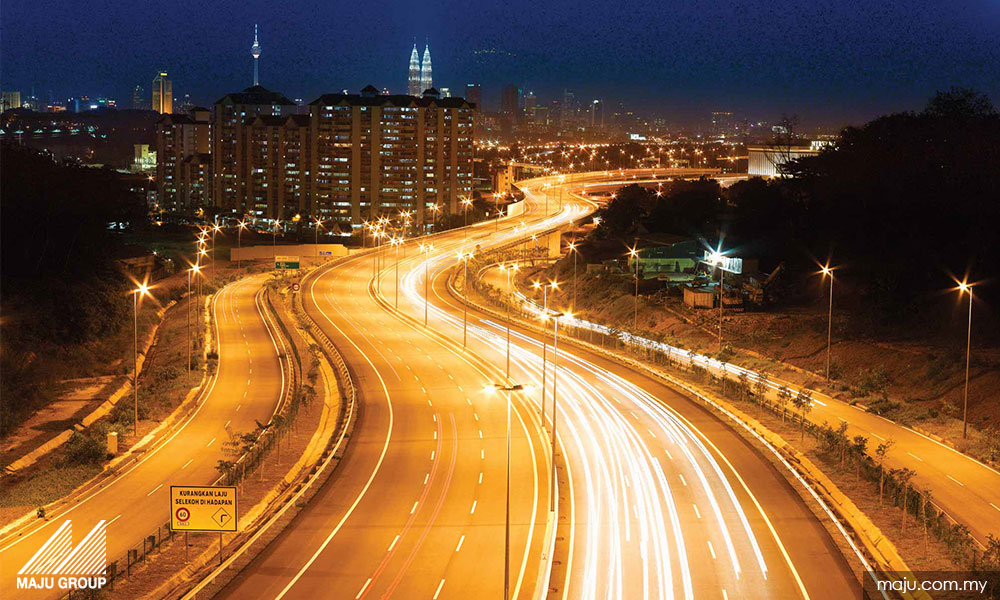
Mobility is the backbone of civilisation. The easier and farther people can move, the population can be more connected, a wider network established, more trade transacted, more goods transferred, more knowledge exchanged, and mega-cities formed.
This is especially so for major roads. Take for instance the ancient Silk Roads. As Oxford historian Peter Frankopan wrote: “There was a good reason why the cultures, cities and peoples who lived along the Silk Roads developed and advanced: as they traded and exchanged ideas, they learnt and borrowed from each other, stimulating further advances in philosophy, the sciences, language and religion.”
Roads are the main infrastructure for land travelling throughout human history. Many roads remain so for short distance journeys in every country today. Not a single developing country or city that does not use roads or has stopped building roads as part of socio-economic progress.
Sure, each country utilises roads differently but none of them has stopped building roads. The importance of building roads to improve mobility is universally understood by all city planners. The disagreement is over how to use them. All modes of ground transportation from horse carriages to bicycles, motorcycles, cars, buses, and lorries need roads. Roads bring people together, expand empires, create cities and facilitate the advancement of knowledge and discoveries. In other words, roads have enabled the rise of civilisation.
Therefore, a feasible transport master plan that relieves traffic congestion in the short run and capable of increasing public mobility, in the long run, needs to be supported by a good road network. Such a network is integral to public transportation.
The Penang Transport Master Plan (PTMP) is a good example of such a project.
Originated by the Penang Transport Council and established by the Penang state government in 2009, the master plan proposal has gone through altogether seven years of preparation before getting approved in January 2016.
Over the seven years, there were two major modifications before the current version of the master plan was adopted. These are the result of consultation and discussion done with all the relevant state and federal agencies.
The first one was over the study prepared by Halcrow in 2013 while the second one was over the alternative proposed by SRS Consortium in 2015. Some components were dropped, some adopted and new ones were added.
For instance, the seven tram routes on the island were dropped. This is for good reason as it involves land acquisition and underground utility adjustment that will incur more cost than estimated, and potentially increase traffic congestion during and after the implementation.
Whereas the undersea tunnel proposed in the Halcrow study was included as it will enhance connectivity between the island and the mainland, opening up a strategic corridor in the northern region of the peninsula covering Seberang Perai Utara, Kedah, southern Perlis, and northern Perak.
Furthermor e, the Halcrow study was conceived as a short-term solution, up until 2030. A long-term transport master plan for Penang needs to outlive our generation in order to secure the future of subsequent generations. Therefore the adopted PTMP looks to 2050 and beyond. All the critical components are meant for a comprehensive network to increase public mobility in the long run. This includes the proposed major roads.
To say that “more roads will lead to more cars on the road” is wrong. The phrase is mere sophistry that not only lacks nuances but is devoid of basic logical reasoning. The logic is the same as saying “the cause of divorce is marriage”.
Many studies that claim to have proven “the increase of roads leads to the increase of cars on the road” demonstrates only a correlation but not causation. It is well known among credible statisticians, scientists, and thinkers that the occurrence of two variables does not establish a causal relation.
Rather, it is the convergence of institutional, social, economic, political, and personal factors that induce the increase in private car usage. To reduce this complex interplay to “more roads equals more cars” is not only misreading statistics but also unscientific and unthinking, lacking multi-dimensional comprehension.
With the consistency and efficient implementation of good transport policy, having more roads does not lead to more cars on the road. Some of the significant factors that put more cars on the roads are the availability of cars in the market, the consumer’s ability to purchase a car, the facility of a car loan, the need for mobility and personal comfort, the car’s symbolism of prestige, and the infrastructure conducive for private car usage.
Take away one or two of these, even without a good public transport system, private car usage will not increase with more roads.
As argued above, building roads is required for a developing state to increase mobility and this is understood by all credible city planners. Not without good reasons is China reviving the ancient transnational road network in its latest reincarnation, “Silk Road Economic Belt and Maritime Silk Road” or popularly known as ‘One Belt, One Road’.
Like all great civilisations, developing new road networks is a must to secure the future of a state. We can disagree over how to utilise them.
The writer is a former member of the traffic management and urban planning committees of the Seberang Perai Municipal Council.
The views expressed here are those of the author/contributor and do not necessarily represent the views of Malaysiakini. -Mkini


No comments:
Post a Comment
Note: Only a member of this blog may post a comment.